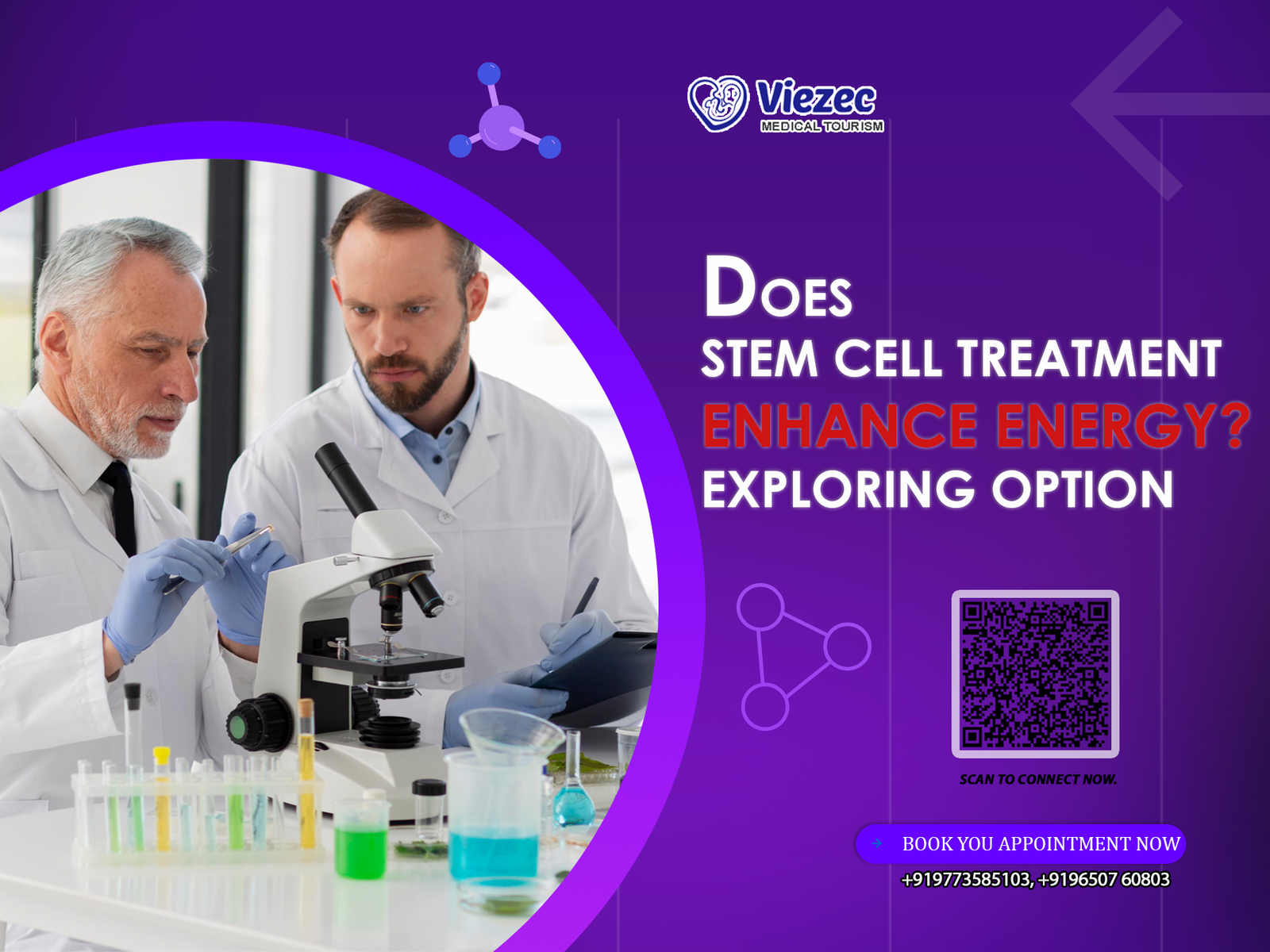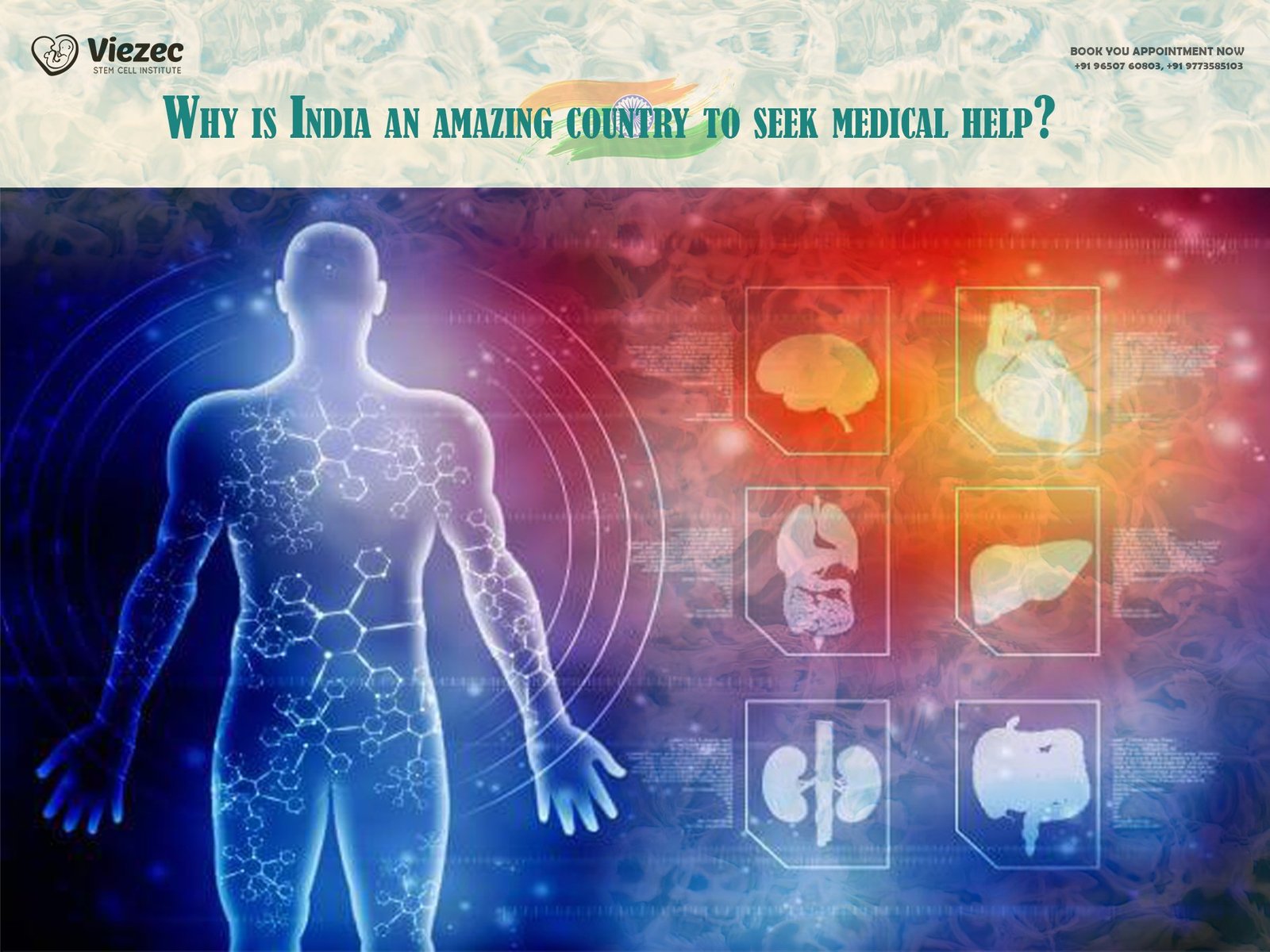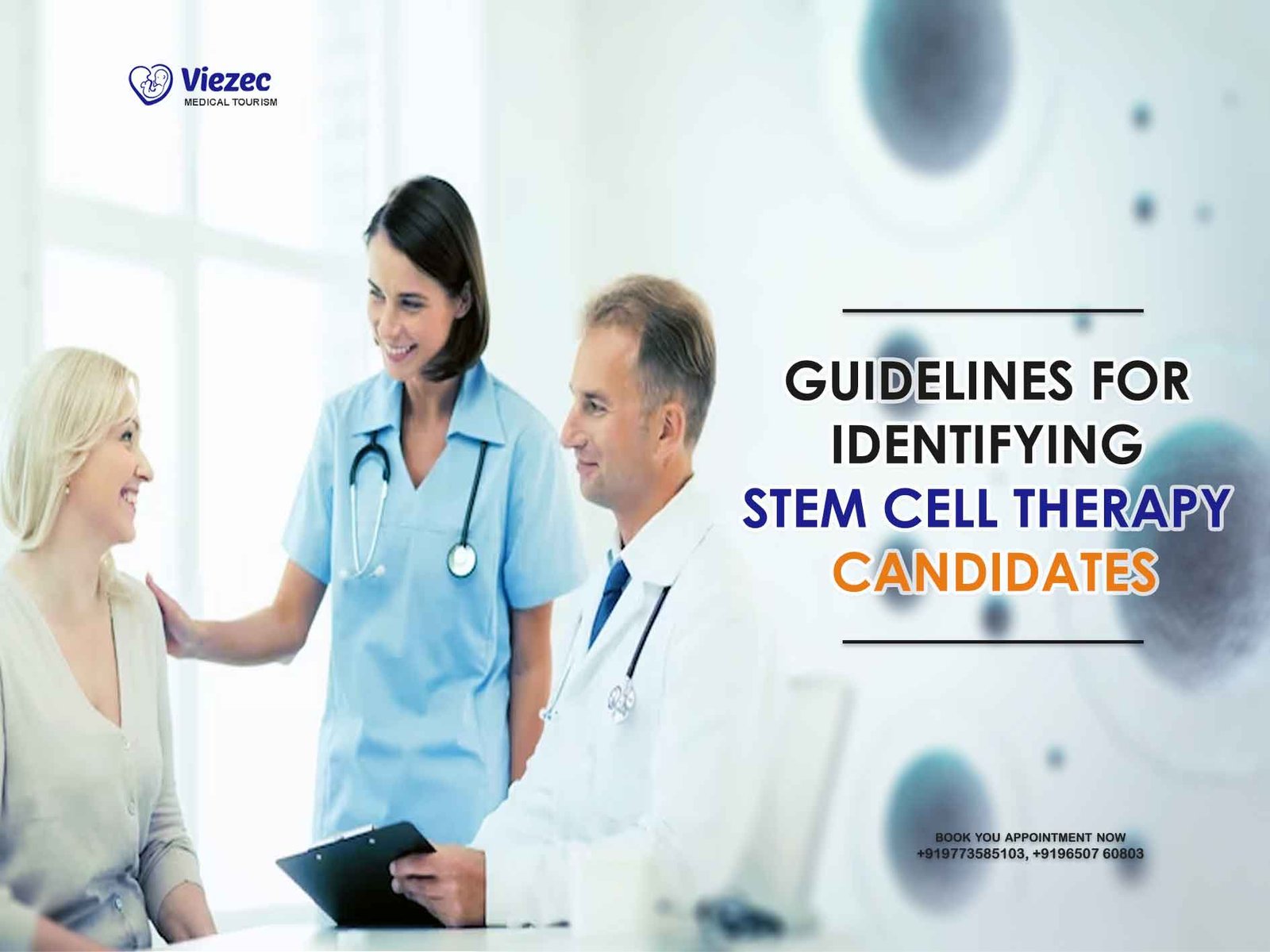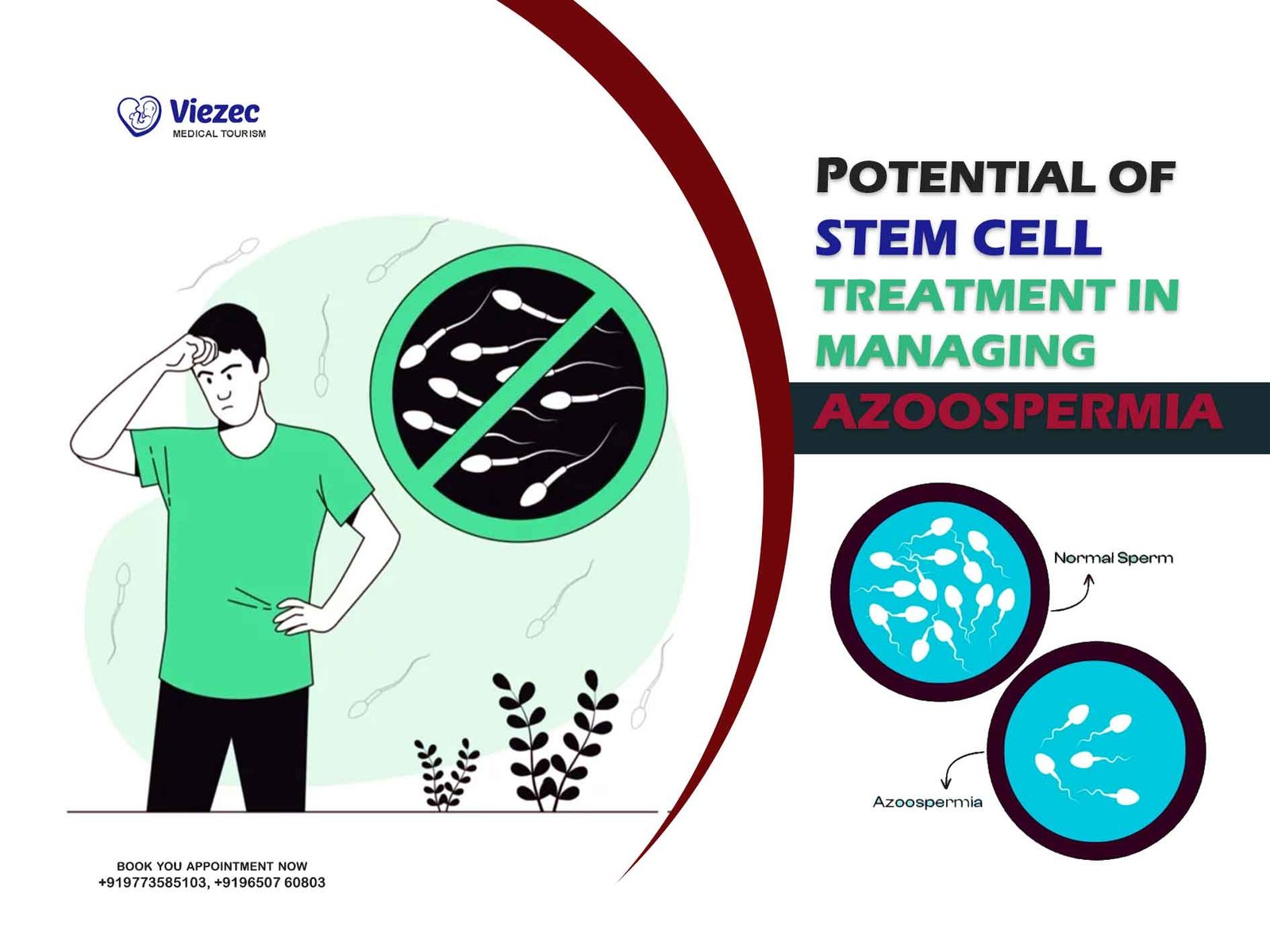Feeling constantly drained despite rest and healthy habits? You’re not alone—and stem cell therapy may hold answers. This cutting-edge treatment is gaining attention for its potential to restore energy at the cellular level. In this blog, we explore how stem cells work, what the science says, and whether this regenerative option could help you reclaim your vitality.
What Is Stem Cell Therapy?
Stem cell therapy is a cutting-edge field in regenerative medicine that taps into the body’s natural ability to heal and restore itself. At its core, the treatment involves using stem cells — unique, versatile cells capable of transforming into various types of specialized cells — to repair or replace damaged tissue and support the body’s recovery processes.
How Stem Cells Work in the Body
Think of stem cells as your body’s master builders. They’re the raw materials from which all other cells are made. Under the right conditions, these cells can divide and either remain as stem cells or become more specialized cells, like muscle, brain, or blood cells. What makes them truly remarkable is their ability to regenerate — they can repair damaged tissue, reduce inflammation, and support healing at a cellular level. This ability is what makes them so promising for people dealing with chronic conditions, age-related decline, or unexplained fatigue.
Different Types of Stem Cells Used in Treatment
Stem cells come in several forms, each with different capabilities and clinical uses:
-
Embryonic Stem Cells (ESCs): These pluripotent cells are derived from early-stage embryos and can become virtually any type of cell in the body. Due to ethical concerns and regulatory limitations, they’re primarily used in research rather than clinical therapies in the U.S.
-
Adult Stem Cells (ASCs): Found in bone marrow, blood, and fat tissue, these multipotent cells are typically used in therapies targeting specific tissues. They’re commonly applied in orthopedic and autoimmune conditions.
-
Mesenchymal Stem Cells (MSCs): A subtype of adult stem cells, MSCs are often harvested from bone marrow or adipose (fat) tissue. They’re widely studied for their anti-inflammatory, immunomodulatory, and regenerative effects, making them especially promising in conditions linked to chronic fatigue or inflammation.
-
Induced Pluripotent Stem Cells (iPSCs): These are adult cells that scientists reprogram to behave like embryonic stem cells. iPSCs offer the versatility of ESCs without the same ethical concerns and may become central to future personalized treatments.
Can Stem Cell Treatment Really Boost Your Energy?
The idea of using stem cell therapy to enhance energy is both exciting and increasingly explored. While the science is still emerging, early findings and clinical observations suggest that stem cells may play a meaningful role in restoring vitality, especially in individuals experiencing fatigue linked to chronic inflammation, aging, or cellular dysfunction.
The Theory Behind Energy Enhancement
At its heart, the theory is simple yet powerful: when your cells function better, you feel better. Stem cells may help repair and rejuvenate damaged tissues, which can lead to improved cellular performance and more efficient energy metabolism. In other words, if your body is operating with renewed cells and less inflammation, it may produce energy more effectively — and you may experience a noticeable boost in stamina, focus, and overall vitality.
This concept is particularly appealing to those with persistent fatigue that doesn’t respond well to lifestyle changes or traditional treatments. While we still need more large-scale studies, many people exploring regenerative medicine are drawn to the idea that stem cells could help restore energy from the inside out.
Fatigue and the Role of Cellular Repair
Fatigue is often a symptom of deeper dysfunction — not just a lack of sleep or overexertion. In many cases, it stems from damaged cells, chronic inflammation, poor mitochondrial function, or impaired tissue recovery. These are areas where stem cells may shine.
Mesenchymal stem cells (MSCs), for example, have shown anti-inflammatory and immunomodulatory effects in early studies. They may also promote repair in muscle and nervous system tissues — two key areas involved in energy regulation. By helping the body heal at the cellular level, stem cell therapy has the potential to improve how we generate and use energy, especially in people struggling with lingering fatigue.
How Stem Cells Influence Energy at the Cellular Level
To understand how stem cells may enhance energy, we have to zoom in — all the way to the cellular level. That’s where the real transformation happens. When stem cells repair damaged tissues and improve organ function, they also support better energy production. One of the key players in this process? Your mitochondria.
The Mitochondrial Connection
Mitochondria are often referred to as the “powerhouses” of the cell, and for good reason. They produce adenosine triphosphate (ATP) — the fuel your body runs on. If your mitochondria aren’t working efficiently, your energy levels can plummet.
Emerging research suggests that stem cell therapy, particularly using mesenchymal stem cells (MSCs), may help improve mitochondrial function. These cells have been shown to promote mitochondrial biogenesis (the creation of new mitochondria) and may help restore balance in cells affected by stress, aging, or disease. While still being studied, these effects could be one of the reasons some patients report feeling more energized after stem cell treatments.
Tissue Regeneration and Improved Function
Beyond mitochondria, stem cells also support tissue regeneration, helping your body rebuild damaged muscles, nerves, and other critical systems that affect how you feel and function. Whether it’s reduced inflammation in your joints, better blood flow to your brain, or improved oxygen delivery to your muscles — these restored functions can make a significant impact on your energy levels.
Energy Production in Damaged vs. Repaired Cells
When your cells are damaged, they struggle to produce energy efficiently. That’s why people with chronic illnesses, autoimmune conditions, or post-viral fatigue often feel constantly drained — their cells are operating at a deficit.
Stem cells may help by replacing or repairing those underperforming cells. The result? Healthier, more functional tissue that can carry out energy production the way it was designed to. This regeneration doesn’t just restore energy — it can help bring back a sense of vitality and well-being that many people with fatigue haven’t felt in years.
Common Causes of Low Energy That Stem Cells Might Address
Low energy can be frustrating — and often, it’s more than just “being tired.” Chronic fatigue is frequently rooted in deeper physiological imbalances, many of which involve inflammation, immune dysfunction, or cellular damage. This is where stem cell therapy may offer new hope. By targeting the underlying causes instead of just masking the symptoms, regenerative treatments have the potential to make a real difference for people struggling with fatigue.
Chronic Inflammation and Autoimmune Conditions
Inflammation is the body’s natural response to injury or illness — but when it becomes chronic, it can drain your energy reserves and disrupt nearly every system in your body. Conditions like rheumatoid arthritis, lupus, and other autoimmune diseases often lead to persistent fatigue because the immune system is in overdrive, mistakenly attacking healthy tissues.
Mesenchymal stem cells (MSCs) are especially promising in this space. Research shows they can help regulate immune responses, reduce inflammation, and promote tissue repair. In clinical studies, MSCs have been used to treat autoimmune disorders and inflammatory diseases — and patients often report improved energy levels as their inflammation subsides.
Age-Related Energy Decline
As we age, our natural repair mechanisms slow down. Stem cell activity declines, mitochondrial efficiency drops, and inflammation tends to increase — all of which contribute to feeling more tired, more often. Many older adults also experience decreased muscle mass, slower recovery times, and reduced oxygen flow, which further limits energy.
Stem cell therapy may help restore some of that lost vitality by rejuvenating aging tissues, supporting mitochondrial function, and reducing inflammatory markers. While it’s not a miracle cure for aging, it may help support healthier aging — and with it, improved energy and physical resilience.
Post-Viral Fatigue and Long COVID
One of the most challenging fatigue-related conditions in recent years has been long COVID, which affects millions of people months after their initial infection. Symptoms often include brain fog, low stamina, and a deep, lingering exhaustion that doesn’t improve with rest. Similarly, other post-viral syndromes — like those following Epstein-Barr virus — share overlapping features.
Researchers are exploring stem cells as a potential treatment for long COVID, given their anti-inflammatory properties and regenerative potential. Clinical trials are underway to see whether MSCs or other stem cell therapies can help reset immune responses and restore energy levels in patients affected by persistent post-viral fatigue.
What Does the Research Say About Stem Cells and Energy?
Stem cell therapy holds immense promise — but like many breakthrough medical fields, it’s still evolving. While we’re seeing exciting developments in the realm of regenerative medicine, the evidence specifically linking stem cell therapy to energy enhancement is early-stage.
Who Might Benefit From Stem Cell Therapy for Fatigue?
Fatigue isn’t one-size-fits-all. It can stem from intense physical strain, chronic illness, immune dysfunction, or simply the passage of time. While stem cell therapy is still considered experimental in most cases, certain groups are showing early signs of benefit — especially when traditional treatments fall short. Here’s a look at who might gain the most from this emerging therapy.
Athletes and High-Performers
For elite athletes and high-performing professionals, physical and mental endurance is everything. Some in these circles are turning to stem cell therapy as a way to enhance recovery, reduce inflammation, and maintain peak energy levels over time. While the data is still limited and largely anecdotal, reports suggest stem cell injections may speed up muscle repair, support joint health, and potentially improve energy metabolism.
It’s important to note that such use is typically off-label and not yet backed by large-scale clinical trials — but it’s an area of active interest in sports medicine.
Individuals With Chronic Fatigue Syndrome (CFS/ME)
Chronic Fatigue Syndrome (also known as Myalgic Encephalomyelitis or CFS/ME) is a debilitating condition marked by profound, unrelenting exhaustion, cognitive dysfunction (“brain fog”), and poor recovery after exertion. Traditional treatments are limited, and many patients are left searching for alternatives.
Early-stage clinical trials using mesenchymal stem cells (MSCs) have shown some promise in reducing symptoms and improving energy levels in CFS/ME patients. The potential here lies in the ability of MSCs to reduce systemic inflammation and restore immune balance — two key factors that are believed to play a role in this complex condition.
Aging Adults Seeking Energy Support
For older adults, declining energy is often chalked up to “just getting older.” But that drop in vitality may be linked to cellular aging, mitochondrial dysfunction, and lower regenerative capacity. Stem cell therapy may offer a way to reinvigorate the body’s natural repair systems, support healthier aging, and help restore a sense of vitality.
By replenishing the stem cell supply and promoting tissue repair, these therapies could help improve physical resilience, reduce fatigue, and support overall well-being. While more research is needed, many aging adults are increasingly curious about stem cells as a proactive option to maintain energy and quality of life.
What to Expect From a Stem Cell Treatment Session
If you’re considering stem cell therapy to combat fatigue, it’s natural to wonder what the process looks like — and how soon you might feel a difference. While each clinic and treatment plan may vary, here’s a general overview of what you can expect during a stem cell therapy session.
The Process—Step by Step
-
Initial Consultation
Your journey begins with a medical evaluation. This typically includes reviewing your health history, discussing symptoms, and undergoing lab work or imaging to determine if you’re a good candidate. -
Stem Cell Harvesting
If autologous cells (from your own body) are being used, the next step is harvesting. This usually involves extracting stem cells from either bone marrow (often from the hip) or adipose tissue (fat, usually from the abdomen or thigh). In some cases, donor-derived (allogeneic) stem cells may be used instead — these are pre-screened and prepared under sterile conditions. -
Processing and Preparation
Once harvested, the stem cells are isolated and sometimes expanded or purified in a lab to concentrate the most potent cells. This step ensures a therapeutic dose is ready for administration. -
Injection or Infusion
The prepared stem cells are then administered, either:
- Intravenously (IV) for systemic treatment (e.g., fatigue, inflammation),
- Or injected directly into targeted tissues (e.g., joints, muscles, or spinal fluid for neurological support).
This step is typically performed in an outpatient setting and may take one to several hours, depending on the method used.
- Recovery and Follow-Up
Most people experience minimal downtime — often just a few hours of rest. Some report feeling a little tired or sore for a day or two after treatment. Follow-up visits may be scheduled to monitor progress and determine if additional treatments are needed.
How Long Until You Might See Results?
Results vary widely depending on the individual, their condition, and the type of stem cells used. Some patients report noticeable improvements in energy, mental clarity, or stamina within a few weeks, while others may take several months to feel the full effects.
The body’s healing and regenerative response takes time, so patience is key. In some cases, especially when using MSCs for chronic conditions, multiple sessions may be recommended to achieve lasting results.
Cost, Accessibility, and Insurance Coverage
Stem cell therapy has enormous potential, but it’s not just a medical decision — it’s also a financial one. Understanding the costs, what’s covered (or not), and how to weigh the value of treatment is essential before moving forward.
Average Treatment Costs
Stem cell treatments can vary significantly in price, depending on:
- The type of stem cells used (autologous vs. donor-derived)
- The complexity of the procedure (localized injection vs. IV infusion)
- The number of sessions required
- The reputation and location of the clinic
On average, treatment costs in the U.S. range from $5,000 to $25,000 per session. More advanced or multi-session protocols can go even higher. Clinics overseas may offer lower prices, but they don’t always follow the same safety or regulatory standards — so it’s crucial to do thorough research before seeking treatment abroad.
Is It Covered by Insurance?
In most cases, no — stem cell therapy is not covered by insurance in the U.S. That’s because most treatments offered for fatigue, energy enhancement, or even anti-aging purposes are still considered investigational or off-label by the FDA.
However, there are a few exceptions. If stem cell therapy is part of an FDA-approved clinical trial, or if it’s used for a narrowly approved condition (like certain blood cancers), some coverage may apply. For energy or wellness-focused use, however, patients typically pay out-of-pocket.
Weighing the Investment
When deciding whether stem cell therapy is worth the cost, it helps to take a broader view. Ask yourself:
- Have conventional treatments failed to help?
- Are your energy levels significantly affecting your work, relationships, or quality of life?
- Are you ready to invest in a long-term wellness solution, not just a short-term fix?
While stem cell therapy is not cheap, many patients report that the improvements in mental clarity, physical stamina, and daily functioning are well worth the investment — especially when other options haven’t delivered results.
Still, the decision should be made with realistic expectations and a trusted medical advisor. The goal isn’t a miracle — it’s meaningful, measurable progress in how you feel and function day to day.
How Does Stem Cell Therapy Compare to Other Energy Treatments?
If you’re dealing with fatigue, you’ve likely already tried a handful of remedies — from energy drinks and B12 shots to herbal supplements and strict sleep schedules. These approaches can help, but they often treat symptoms rather than address the root cause. That’s where stem cell therapy stands apart: it aims to restore energy from the inside out by helping the body heal at the cellular level.
Supplements and Lifestyle Changes
Let’s start with the basics. Lifestyle plays a huge role in energy levels, and it’s always the first place to look. Diet, exercise, hydration, quality sleep, and stress management form the foundation of any lasting energy boost.
Many people also try:
- Vitamin B12 and D3 supplements
- Iron (especially for those with anemia)
- Magnesium, coenzyme Q10, or adaptogens like ashwagandha
While these can be effective — particularly for correcting deficiencies — they rarely reverse deep-rooted fatigue caused by inflammation, mitochondrial dysfunction, or tissue damage.
Stem cell therapy, by contrast, offers a regenerative approach. It doesn’t just support your body — it may help restore function, allowing your cells and systems to work more efficiently. Think of supplements as short-term tools, and stem cell therapy as a way to support long-term repair.
Hormone Therapy vs. Stem Cell Support
Hormone therapy is another common route for treating low energy, particularly in aging adults. Low testosterone, thyroid imbalances, or adrenal fatigue can all contribute to sluggishness, and hormone replacement therapy (HRT) can help restore balance.
But hormones don’t always get to the root of the issue. Stem cell therapy, on the other hand, may support energy in a more comprehensive way — not just by boosting hormone levels, but by repairing the tissues and systems that hormones influence. Some forward-thinking clinics even combine HRT with stem cell therapy for a more holistic approach.
In short:
- Supplements support daily energy needs
- Hormones balance internal signals
- Stem cells aim to rebuild the underlying systems
Used together thoughtfully, they can offer a powerful path toward better energy and well-being.
Real Stories: Can Patients Feel the Difference?
While clinical studies provide the science, real patient stories bring the impact to life. Many people who’ve undergone stem cell therapy — especially those struggling with long-term fatigue — describe the experience as transformative. While individual results vary, the common thread is this: a renewed sense of vitality, both physically and mentally.
Testimonials from People Who’ve Tried It
Patients who have pursued stem cell treatment for fatigue-related conditions often describe improvements like:
- Feeling more energetic in the mornings
- Experiencing clearer thinking or reduced brain fog
- Being able to exercise or stay active without crashing afterward
- A renewed sense of motivation and drive
One 58-year-old patient with chronic fatigue linked to autoimmune issues shared:
“It didn’t happen overnight, but about six weeks after my stem cell infusion, I started waking up without that crushing exhaustion. I had enough energy to go for walks again, cook meals — even laugh with my grandkids without needing a nap.”
Another patient recovering from long COVID reported:
“I went from working half-days and sleeping through the afternoons to being able to function normally again. It felt like I got a part of my life back.”
While not everyone experiences such dramatic outcomes, these stories illustrate the potential of regenerative medicine to improve day-to-day life in meaningful ways.
Before and After: Energy Levels and Quality of Life
Many patients say the shift isn’t just physical — it’s emotional, too. When energy improves, so does mood, confidence, and connection to daily activities. People go from just getting by to actively engaging with their lives again.
That said, not every patient responds the same way. The degree of improvement depends on factors like:
- The underlying cause of fatigue
- Overall health and lifestyle
- The type of stem cells used and treatment protocol
- How early or advanced the condition is when treated
As always, it’s important to approach stem cell therapy with hope, not hype — and base your expectations on both real stories and real science.
Looking Ahead: The Promise of Regenerative Energy
As research evolves and clinical insights deepen, stem cell therapy is no longer a distant concept — it’s becoming a real, viable option for those seeking to restore energy, vitality, and quality of life. From chronic fatigue sufferers to aging adults and high performers, regenerative medicine offers hope where conventional solutions fall short.
While it’s essential to approach any treatment with informed caution, the potential for stem cells to transform how we treat fatigue is undeniable. The field is rapidly advancing, and with each new study, we move closer to therapies that not only heal but revitalize from within.
If you’re considering stem cell treatment to help combat persistent fatigue or energy loss, working with a reputable and experienced provider is key. Viezec Stem Cell Institute, based in India, is one such trusted name. Known for its commitment to quality care, ethical standards, and evidence-based treatment protocols, Viezec offers personalized stem cell therapy options tailored to each patient’s unique needs.
In a world where energy fuels everything we do, it’s exciting to imagine a future where regenerative treatments help more people live fully, feel stronger, and age with vitality. Stem cell therapy may not be a magic bullet — but for many, it could be the start of a brighter, more energized life.









